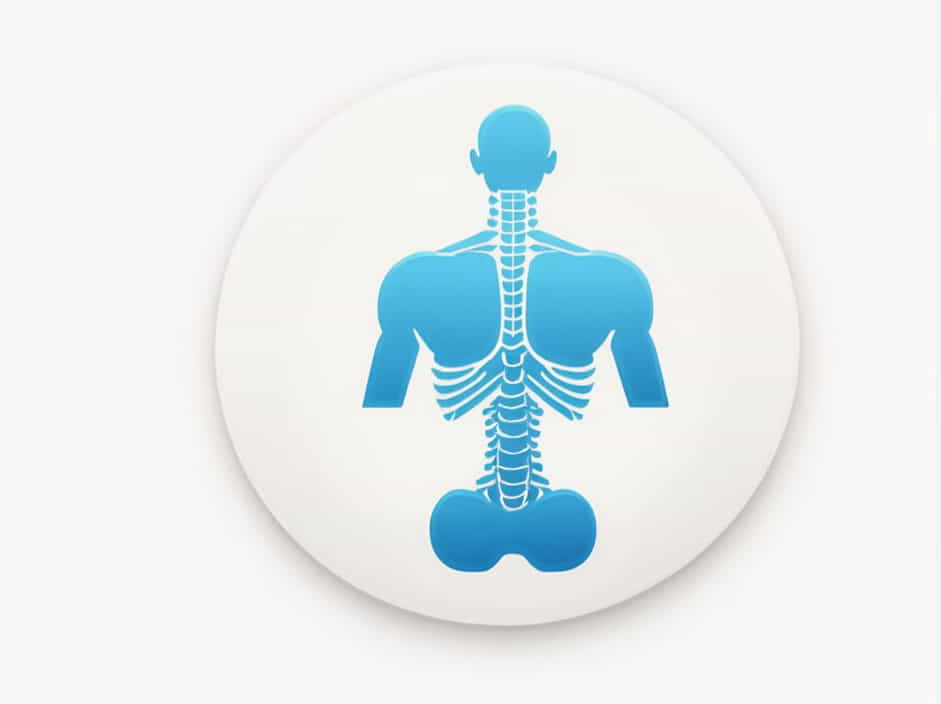The spine of the scapula is a bony ridge on the posterior surface of the scapula (shoulder blade). It plays a crucial role in muscle attachment, shoulder movement, and anatomical landmarks. One of the key aspects of this structure is its alignment with specific vertebral levels, which helps in clinical assessments, medical imaging, and anatomical studies.
Understanding the vertebral level of the spine of the scapula, along with its functions and importance, provides valuable insights into shoulder biomechanics and musculoskeletal health.
What Is the Spine of the Scapula?
The spine of the scapula is a prominent, horizontal ridge that divides the posterior scapular surface into two regions:
- Supraspinous fossa (above the spine)
- Infraspinous fossa (below the spine)
It extends laterally to form the acromion, which connects with the clavicle (collarbone) at the acromioclavicular joint. This structure serves as an attachment site for key shoulder muscles.
Vertebral Level of the Spine of the Scapula
The spine of the scapula aligns with the T3 vertebra in the thoracic spine. This anatomical landmark is useful for identifying:
- The position of the scapula in relation to the spine
- Muscular and skeletal alignment in postural analysis
- Medical imaging and physical assessments
Key Vertebral Landmarks Related to the Scapula
- Superior Angle of the Scapula → Aligns with the T2 vertebra
- Spine of the Scapula → Aligns with the T3 vertebra
- Inferior Angle of the Scapula → Aligns with the T7 vertebra when arms are at rest
These reference points help in diagnosing posture issues, assessing muscle function, and guiding physiotherapy treatments.
Muscles Attached to the Spine of the Scapula
Several muscles are connected to the spine of the scapula, contributing to shoulder movement and stability:
1. Trapezius Muscle
- The upper fibers attach to the acromion and help with elevation of the scapula.
- The middle fibers attach to the spine of the scapula and assist in scapular retraction.
- The lower fibers contribute to scapular depression and rotation.
2. Deltoid Muscle
- The posterior deltoid originates from the spine of the scapula and is responsible for shoulder extension and external rotation.
3. Supraspinatus and Infraspinatus Muscles
- These rotator cuff muscles are located in the supraspinous and infraspinous fossae, supporting shoulder stability and movement.
Clinical Importance of the Vertebral Level of the Spine of the Scapula
1. Postural Assessment
- The alignment of the scapula with the T3 vertebra is a key indicator of proper posture.
- Forward shoulder posture or scapular winging can cause misalignment and muscle imbalances.
2. Shoulder and Back Pain Diagnosis
- Muscle dysfunction in the trapezius and rhomboids can lead to pain in the scapular region.
- Identifying the scapular position relative to the T3 vertebra helps diagnose postural deviations and shoulder instability.
3. Medical Imaging and Palpation
- Radiologists and clinicians use the spine of the scapula as a landmark for X-rays, MRIs, and physical exams.
- Palpating the T3 vertebra helps in assessing spinal alignment and musculoskeletal conditions.
Exercises to Improve Scapular Position and Function
1. Scapular Retraction
- Helps strengthen the middle trapezius and rhomboids, preventing rounded shoulders.
- Perform by squeezing the shoulder blades together without shrugging.
2. Shoulder Blade Wall Slides
- Improves scapular mobility and posture.
- Stand against a wall and slide your arms up while keeping the scapula engaged.
3. Prone Y and T Raises
- Strengthens the lower trapezius and rotator cuff muscles.
- Lie face down and lift your arms in a Y or T shape while maintaining scapular control.
The spine of the scapula aligns with the T3 vertebra, making it a vital landmark in posture assessment, medical imaging, and musculoskeletal health. It serves as an attachment site for important shoulder muscles, contributing to movement, stability, and function.
Maintaining proper scapular alignment and strengthening supporting muscles can help prevent shoulder pain, postural issues, and movement dysfunctions. By understanding the relationship between the scapula and the thoracic spine, individuals can improve overall shoulder mechanics and physical well-being.
